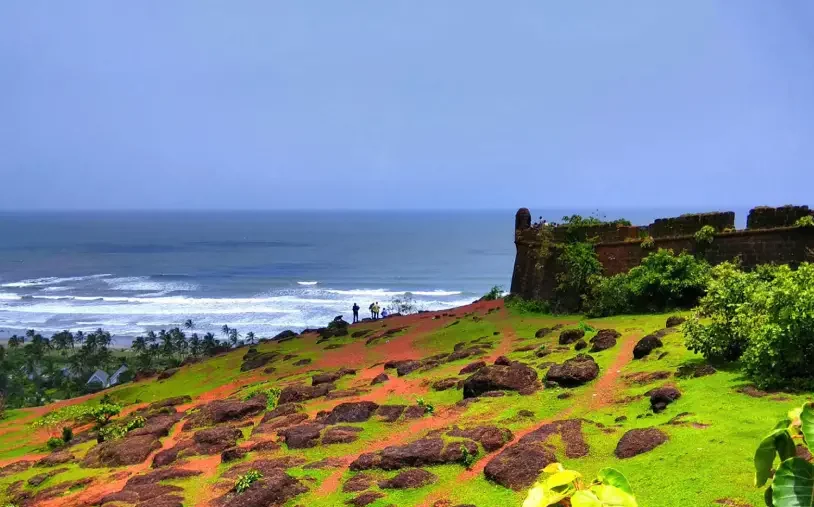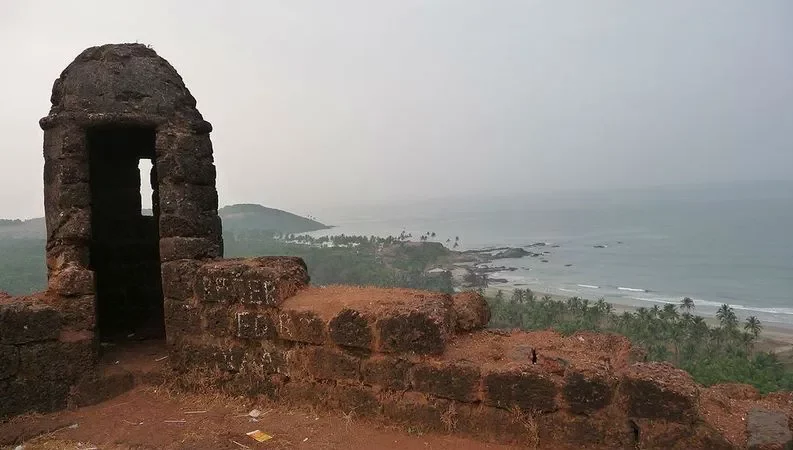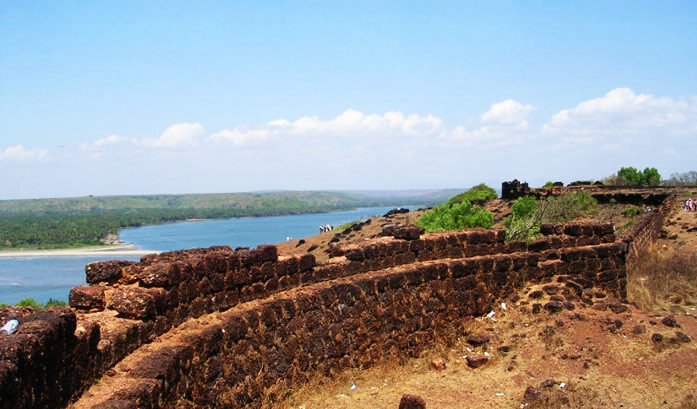One of the most well-known sights in Goa is Chapora Fort, which has a fascinating history and a beautiful setting. It is a well-liked getaway for people seeking some peace and quiet along the shore and is only around 10 miles from Mapusa. Bollywood lovers also frequent the fort because it served as the location for the 2001 smash film Dil Chahta Hai. Even though it is currently in ruins, Chapora Fort’s fascinating past and stunning views of the Arabian Sea and the neighbouring Vagator Beach draw both tourists and residents year-round.
Therefore, be sure to add Chapora Fort on your schedule while planning what to do in Goa. Here are some details regarding Chapora Fort’s opening hours, admission costs, and more.
Information about Chapora Fort, Goa
Location: North Goa, Vagator, Bardez, and Chapora Fort Trail
Timings: Every day from 9:30 am to 5:30 pm.
Entrance Fee: Entry is free
by Commision: Portuguese settlers
Year of Inception: 1717
Ideal Season to Visit: October through February
Time Needed: 1-2 hours
used materials: Rocks made of stone and erratic red laterite
Entrance: A tiny, constrained, and deep gate
The hours of operation and closing for Chapora Fort are flexible. Therefore, if you have any questions, you may either check online or ask at the front desk of the hotel.
History of Chapora Fort 
The fort, one of Goa’s oldest historical monuments, overlooks River Chapora. According to legend, the fort was ruled by a number of different monarchs after the Portuguese took Bardez. The fort’s history extends back to the Adil Shah dynasty, despite the fact that the current construction was erected in 1717 by Portuguese colonists. Sultan Mohammed Adil Shah of Bijapur erected a fort at the location, which was formerly known as Shahpura. The building acted as a watchtower for the Muslim sultans.
But after the Goan Adil Shah dynasty was overthrown, Portuguese colonists seized power, reconstructed the old fort, and gave it the name Chapora. The fort was utilised by the Portuguese to defend their lands from Maratha kings. Inside the fort, they also constructed a few tunnels that functioned as escape routes in case of an emergency.
Throughout the 150-year Portuguese occupation, the Marathas took control of Chapora Fort numerous times. During the rule of Shambhaji Bhosle, the son of Chhatrapati Shivaji Maharaj, it was allegedly conquered thrice. But the Portuguese retook the fort from the Marathas and held it until 1892, when they finally gave it up permanently. When the Portuguese left Goa in 1961, the Indians took control of Chapora Fort.
Chapora Fort: Today
The fort is currently in ruins, but it remains one of the most popular tourist destinations in Goa due to its illustrious past, unmistakable majestic allure, and picturesque setting close to the sea. As well as history and architecture enthusiasts, it is a much-liked viewing area for those who enjoy the outdoors. The fort’s exterior walls and ramparts still survive in large portions.
Fort Chapora: Structure
The fort exhibits a distinct style of construction and was constructed utilising erratic laterite rocks and stones. To prevent adversaries from scaling and entering the fort, the fortification walls around the edge or outline of the upper slopes were kept steep and slanting. Another measure to make it difficult for the opposing army to enter the fort is the main entry gate’s size and narrowness.
A church honouring St. Anthony once stood in the fort during the Portuguese occupation, but it is no longer there. According to legend, Chapora Fort also included bastions, barracks, and guards’ quarters. But today, all that’s left of some of these buildings are their ruins.
Attractions in Chapora Fort

Once you get there, you can take in the breathtaking views of Vagator Beach, Ozran Beach, and Morjim Beach because the fort is situated on a high.
The fort also provides breathtaking views of the Chapora River.
Viewing the sunset from Chapora Fort is lovely. In fact, the fort is regarded as one of Goa’s top locations for watching sunsets.
You can walk on the ramparts that are part of the fort’s broad walls while you tour it.
History buffs will enjoy finding arrow slits, murder holes, and cannon ports on the fort’s walls.
You can also observe the entrances to the Portuguese people’s underground tunnel systems or escape routes as you explore the ruins.
Directions to Chapora Fort

You may go to Goa using any reliable method of transportation because the state has good air, rail, and road links. If you’re flying, Chapora Fort is located roughly 46 kilometres from Goa International Airport. The closest alternative for people travelling by train is Thivim Railway Station, which is located 19 kilometres away. Within the state, people frequently use buses, taxis, and auto rickshaws.
With the aid of taxis, buses, and auto-rickshaws, the fort is conveniently accessible from any location in Goa. About 10 kilometres separate Chapora Fort from Mapusa, and local buses that travel from Mapusa to Vagator Beach make a stop there as well. A narrow route will lead you to the foot of the hill once you are close to Chapora Fort. You must ascend a steep trail for approximately 10 minutes to get to the fort, which is positioned on top of this hill.
Facts You May Not Know About Chapora Fort
The following details regarding Chapora Fort in Goa are less well known:
Over the remains of an old Muslim structure, the fort was built. Some Muslim gravestones can still be seen on the hills’ southern slopes.
Due to the high, uneven, and rocky walls that still hold strong along the edge of the hill today, Chapora Fort was not an easy one to overcome. However, Hindu raiding bands repeatedly overran the fort.
Without any casualties, Sambhaji’s men took control of the fort in 1684. His troops are thought to have broken through the fort walls by grabbing onto 1.5 m long monitor lizards. The Portuguese general in charge submitted to the daring Maratha king after being moved by Sambhaji’s deed.
Nearby landmarks
Following your visit to the fort, you can tour other well-known sights in the area. Since Goa is well-known for its beaches, flea markets, and restaurants, you should visit as many as you can to create lasting memories of your trip. Shopping in Goa is a real treat because you may get a wide range of goods for incredibly low costs. At one of the many restaurants in Goa, foodies may sample delicious Goa fare and fresh seafood. Near the fort, there are several choices.




